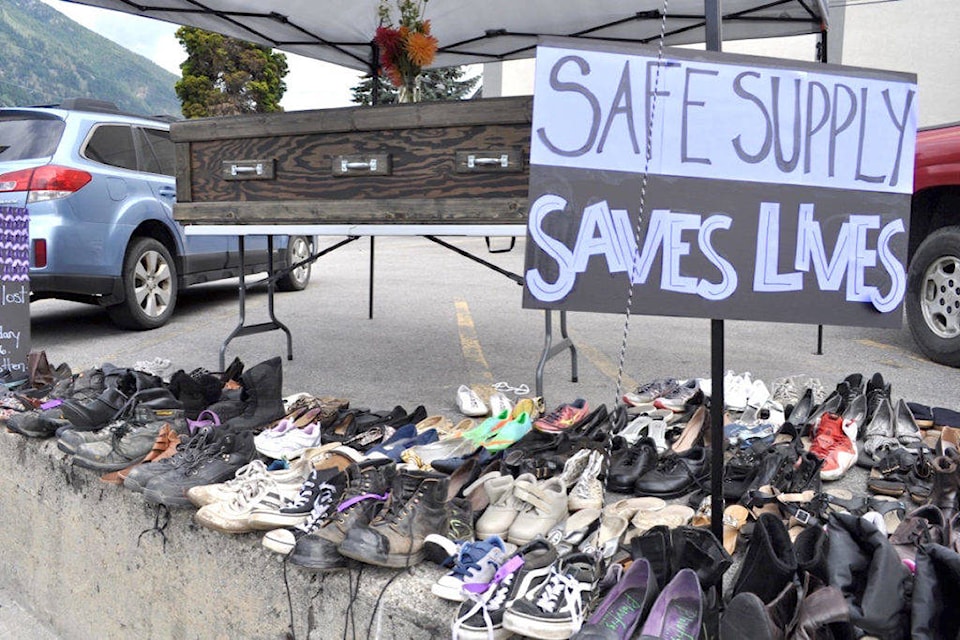Dear Concerned Citizens,
We echo the concern that you and many others in Trail show for our vulnerable residents.
Read more: Message from Concerned Trail Citizens
The city is making a concerted effort to address the serious issues that face our homeless, and those with mental health and substance use issues. Some of the points you make in your letter of May 20 are valid, however we would like to correct some misconceptions.
We agree that there is a pressing need for temporary housing for the homeless.
A number of groups are working towards a longer-term solution, but permanent supportive housing is likely some time off and people need a secure place to live in the meantime. Any solution to housing must include the views of the people who will be living there.
Our group is very open to pursuing these discussions.
Some of the measures mentioned by the city will not be effective, as you point out.
Lights and cameras in the alley have been tried before, to no effect.
Further, they would be very expensive, as pointed out by the city’s own Director of Public Works, Chris McIsaac, at the April 19 meeting of the Governance and Operations Committee.
Similarly, moving dumpsters will inconvenience businesses and do nothing to support the people in need of help right now.
The funds directed to these efforts would be far better spent on an Overdose Prevention Site (OPS).
To correct the misconceptions in the May 20th letter, experience shows that OPSs do not attract people who use substances to an area. They deal with substance use disorder as the health issue it is, providing the supports and safe supply required to prevent death and stabilize people to guide them towards healing and recovery.
The safe injection site proposed would be an Overdose Prevention Site (OPS), which does not require federal approval in British Columbia and would serve as a centre for harm reduction.
An OPS allows people to use their illicit substances while monitored by trained professionals who can intervene in case of overdose.
It provides drug testing services and harm reduction supplies, such as naloxone kits and clean needles, which prevent the transmission of blood-borne diseases like HIV and Hepatitis C.
The OPS would also offer mental health and addictions counselling and substance use treatment referrals, and other health services. There has never been a death reported at any OPS or safe injection site in Canada.
Canada’s first safe injection site (Insite), opened in Vancouver in 2003. It was extensively evaluated. Among the findings:
- After 24 months, almost one-quarter of participants (23%) had ceased injection substance use;
- Over half (57%) of participants had entered addiction treatment programs.
Insite also benefited the community in the following ways:
- Injecting in public places was reduced by half;
- There were 60% fewer publicly discarded needles and other injection related litter;
- There was less call on emergency medical and police services, allowing them to focus on other emergencies;
- The spread of infectious diseases, such as HIV and HEP C, was significantly reduced, providing further savings in healthcare costs.
There was a 25% decline in vehicle break-ins and theft, and no increases in drug trafficking, assaults/robbery or other crimes commonly linked to substance use.
OPS sites can be run by community organizations, with or without support from health authorities.
ANKORS has operated an OPS site in Nelson since 2018 and also offers harm reduction services in Cranbrook. During that time, they have prevented many overdose deaths.
With appropriate funding, ANKORS would be willing to consider operating an OPS in Trail.
The Canadian Substance Use Costs and Harms Scientific Working Group conducted a study in 2014 in which it found the healthcare costs of substance use to be $1,050 cost per person in BC or $4.9 billion, with opioid use responsible for about 10% of that amount. (This figure does not include costs to the criminal justice system, lost productivity, or costs associated with motor vehicle incidents, fires, or other harms of substance use.)
Deaths due to opioid use have increased five-fold since 2014, overdose incidents many times more than that, so the cost of health services is now likely many times more than this figure. Nevertheless, using 2014 figures, the cost in health services of opioid use in Trail, with a population of about 8,000 people, is $800,000 per year. Supporting an OPS would cost about $100,000 per year.
Operating an OPS in Trail is clearly an effective solution, both financially and in terms of the benefit to the community and people who use substances.
Please remember that people who use substances are people first.
Many who currently or formerly used substances live stable lives and make valuable contributions to our communities. We owe it to everyone to invest in this life-and community-saving facility.
Signed,
The Trail Community Action Team (Partners that are skilled in the care of people who use substances)
Diana Daghofer and Tammy Mclean, Moms Stop the Harm
Lisa Kavaloff, REDUN, Trail
Amber Streukens and Alex Sherstobitoff, ANKORS
Sheila Adcock, Career Development Services
